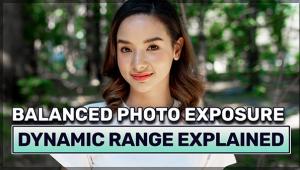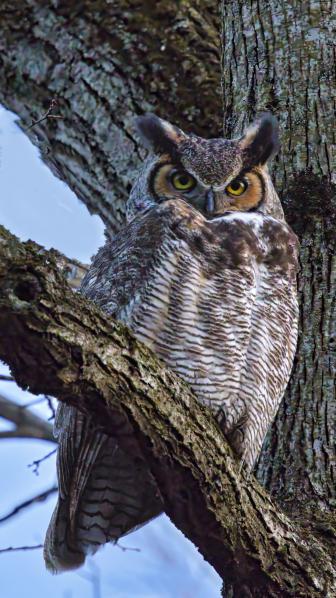Nikon’s D40x D-SLR; A Sibling To The D40, But With Higher Megapixel Count Page 2
The 12-24mm is my kind of lens. At f/4 it's only one stop slower than
my preferred f/2.8 max aperture and it has a constant aperture throughout the
range. It's got two ED glass elements and three aspherical lens elements,
plus lets you get a bit closer than a foot on close focus, a great feature for
foreshortening. With an f/22 minimum aperture you can get some real mind-boggling
depth of field effects on an exaggerated foreground/background setup. And at
f/4 max and a foot focusing you can also get some very pleasing soft focus background
effects. In fact, that's the lens I found myself working with most with
the D40x.
Another optional accessory that Nikon included in their test kit was the SB-400
flash. Controlled entirely from the camera body, the small flash has not much
more than an on/off switch and a hot shoe lock. Nikon claims a GN of 98.4 at
ISO 200, and a range of 66 ft. It does have a small bounce head. I am happy
to report that this works very well in conjunction with the D40x and I was able
to alter effects when using different aperture settings in Manual or AV mode.
It did not blast out close-up shots, a problem with most on-board flash units,
and has a very low profile. It raises the flash tube to just the right height
so redeye is negligible. I thought it extraneous at first because of the built-in
flash, as I rarely use the built-in for more than close-ups anyway, but after
a while I kept it on the camera all the time. And if you want to use flash for
subjects more than 8 ft away the built-in just won't handle the job.
 |
 |
||
|
|
I worked with the D40x on a few trips to locations in the spring, which meant
lots of flowers and colorful shots. I shot in the raw+small JPEG format option.
It's the only raw+ option available: a 10 megapixel plus D-SLR camera
should have more choice in this regard. As the Photoshop Raw plug-in did not
incorporate the D40x code as of this writing I worked with Nikon's Capture
software on a MacBook Pro. I haven't worked with Capture in a while and
although it is not as graphically elegant as Lightroom or Aperture I give it
high marks for facility and options available for the NEF file format. Small
tabs along the Browser window open up a world of information, and the changes
you can make in processing are legion.
One of the matters we'll be exploring in Shutterbug in the next few months
is how chip (sensor) size affects image quality, especially as megapixel counts
are climbing without a concomitant upping in sensor size. Digital Imaging 101
tells us that the smaller the pixels, the less light sensitive they are, thus
the noisier the image in lower light, higher ISOs, and, though this has nothing
to do with ISO, long shutter speeds (4 seconds and above). I haven't taken
a 4-second exposure in 30 years, so I passed on that test. But I did try out
a variety of ISO settings in shade, with the NR filter on and off.
 |
|
|
If you ever kept clicking your finger on the zoom button you know the look
of an almost pixelated image showing up on the screen. It's going down
into the mosaic to pixel manifestation level. I did this with shots made at
various settings: at ISO 100 and even 200 the noise is almost nonexistent, even
in details from tightly cropped areas in the image. At ISO 400 I saw the first
slight traces of noise, a mottling in the shadow areas, but nothing objectionable.
At 800 it becomes more pronounced and it's almost as if the neighboring
pixels are repelled from one another; a brown might show up as a two-tone where
one value exists at lower ISOs. At 1600 the effect comes on stronger.
This is where you enter noise reduction filter territory. At an ISO above 400
(and I assume this means 401) the camera automatically turns on the noise reduction
filter, which "smooths" the noise and yields a slightly softer image.
You may or may not like this effect, so you can go into the Menu and turn noise
reduction off. However, this only allows you to do so at set speeds of ISO 800,
or less. You have no control over the noise reduction process at higher speeds.
 |
|
|
This might bother you, or it might not even be noticeable to you. You certainly
do not have control over how much noise reduction is applied, though if you
want more or less and shoot raw you can always alter it later in a raw processor.
In fact, the Nikon Capture NR processor allows for a balancing of noise and
sharpening, and seems quite effective.
So, I can only assume that the images above ISO 800 are pretty darn noisy without
in camera processing. This is probably the case with many D-SLRs that take this
decision out of your hands. And that increased noise and subsequent automatic
processing might be a consequence of packing more pixels on the chip. But the
benefit here is that ISO 1600 and even the High ISO, which the D40x instruction
books tells us is "equivalent (to) roughly ISO 3200," yield satisfactory,
albeit somewhat soft, images. But having tested past Nikon amateur D-SLRs I
can also attest to the fact that the noise suppression at very high ISOs has
been improved in this model's image processor.
 |
|
|
In assigning this camera the D40 moniker Nikon has basically stated that it carries the same features and functions of its highly successful sibling, albeit with a twist. That twist in the D40x is a 10.2-megapixel chip. Now that we have 12-megapixel digicams (integral lens cameras) battling the megapixel wars, a D-SLR has to be able to compete with no shutter lag, a range of lenses, additional accessory lighting options, and the fit and finish of a higher caliber camera. While the D40x lacks full compatibility with many Nikon lenses, still has no depth of field preview, and lacks multiple raw+JPEG options, it is a fine, lightweight traveling companion that delivers excellent images in the 11x14" to 13x19" print range. This begs the question--is the D40x a bow to the pressures of the megapixel race in a beginner D-SLR body, or is it an advanced amateur D-SLR mainly due to the fact that it now has a 10+ megapixel sensor? The answer from this corner is that it seems a bit of both.
For more information, contact Nikon Inc., 1300 Walt Whitman Rd., Melville, NY 11747; (800) 526-4566; www.nikonusa.com.
- Log in or register to post comments

































